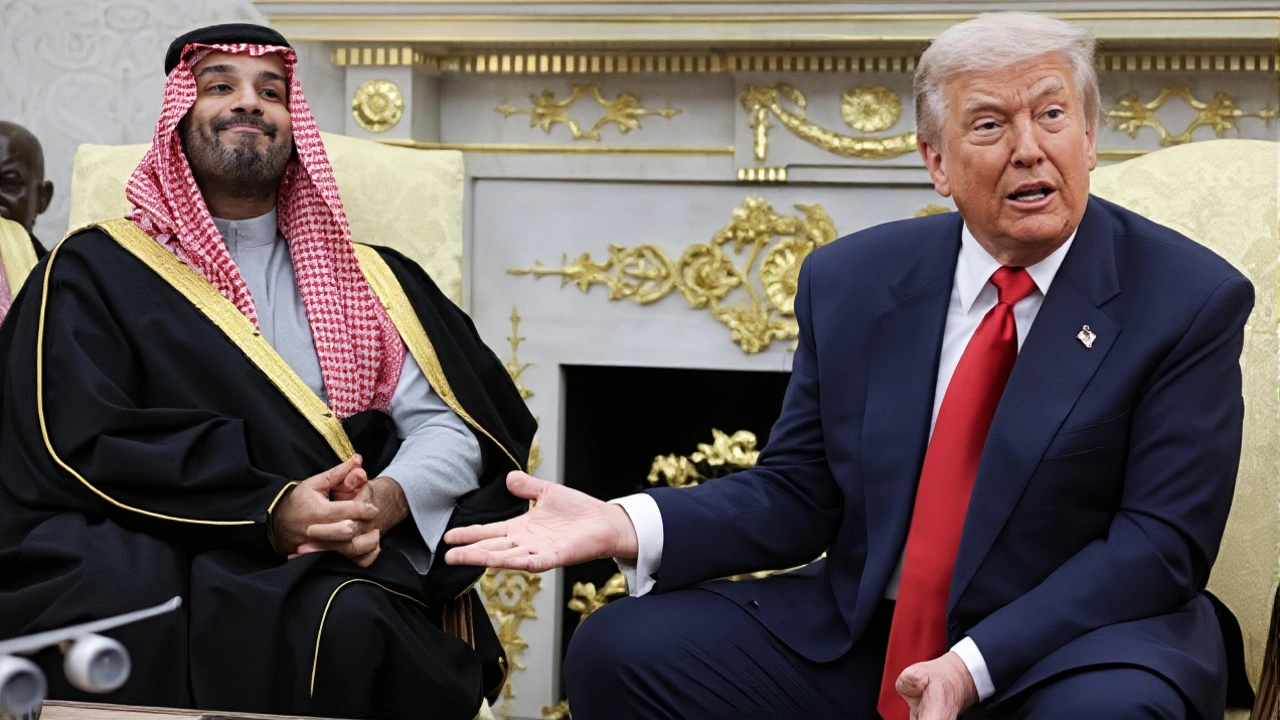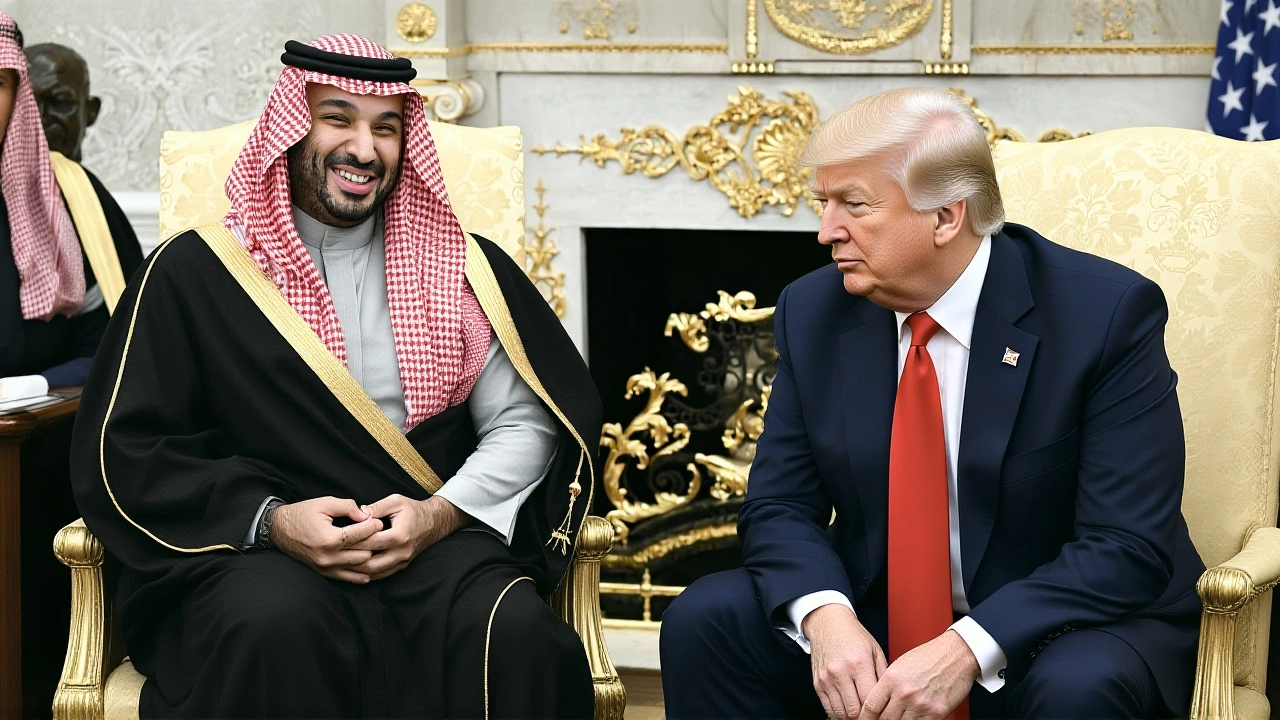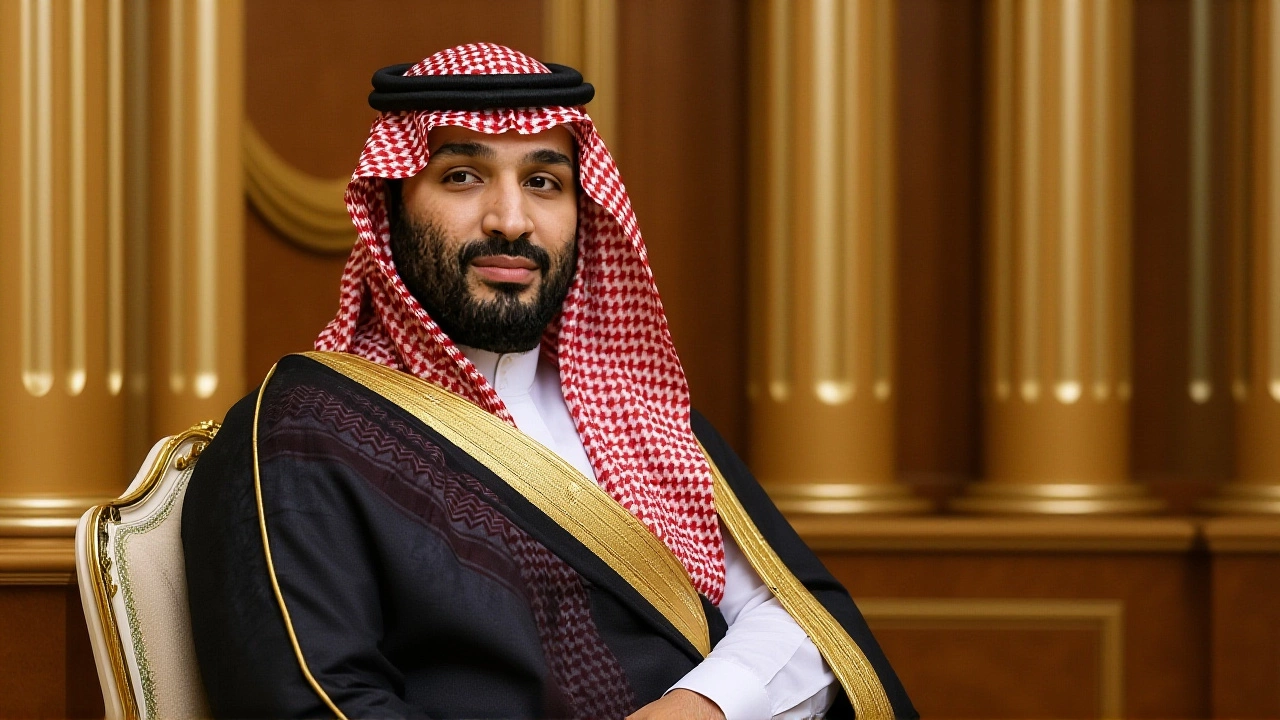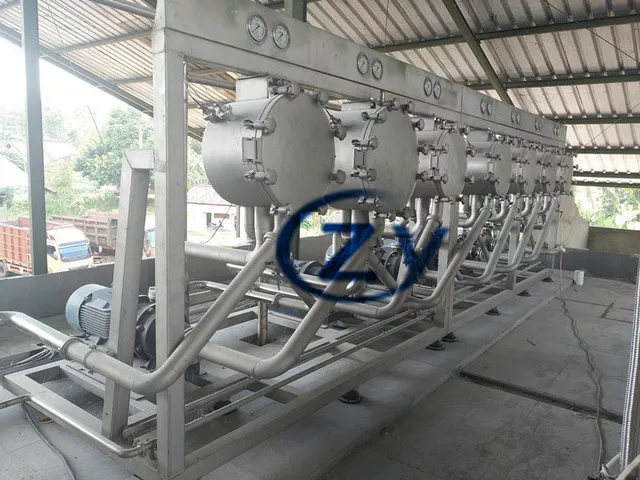When Mohammed bin Salman walked into the Oval Office on November 18, 2025, he didn’t just bring handshake pleasantries—he brought a $1 trillion promise. The Crown Prince of Saudi Arabia stunned Washington by upgrading a previously announced $600 billion investment pledge into the U.S. economy to nearly $1 trillion, a move that reshapes global capital flows and signals a seismic realignment in Middle East geopolitics. The meeting, held at the White House in Washington, D.C., came just hours after the signing of the U.S.-Saudi Strategic Defense AgreementWashington, D.C., a landmark pact that locks in decades of military cooperation. President Donald J. Trump, in his second non-consecutive term, called bin Salman "a very good friend"—a phrase that carried more weight than small talk, given the shadow of past controversies. The Crown Prince didn’t just announce the number—he laid out the blueprint: artificial intelligence, energy infrastructure, defense manufacturing, and advanced materials. The White House fact sheet released that afternoon listed over a dozen specific sectors where Saudi capital would flow, with an emphasis on American job creation. "You’re doing that now," bin Salman told Trump, referring to the administration’s aggressive push for domestic industrial revival. "And I like the plan you worked hard on." It wasn’t flattery. It was strategy.
From Riyadh to Washington: A Strategic Reboot
This wasn’t the first time bin Salman had come to Washington with a blank check. During President Trump’s May 2025 visit to Riyadh, the two sides sealed a $600 billion investment framework. But that deal was seen as cautious—a trial balloon. This November agreement was the full-scale landing. What changed? The geopolitical winds. A year ago, as the Biden administration pushed green energy mandates and eased pressure on Iran, Saudi Arabia looked east—to Beijing, to Moscow, to alternatives. Now, with Trump back in power, American energy dominance is back on the table, Iran’s nuclear progress has stalled, and Washington is actively courting Riyadh as a linchpin in a new Middle East order. "A year ago, we had an American war on fossil fuels alongside an appeasement campaign of Iran and the Houthis," said Edmund Fitton-Brown, Senior Fellow at the Foreign Defense Digest. "Now, with a president focused on brokering Saudi-Israel normalization and restoring U.S. energy leverage, the crown prince is betting everything on Washington. This isn’t just money—it’s a century-long alliance.Weapons, Tanks, and Tensions
The defense deal was the crown jewel. The U.S. will sell Saudi Arabia F-35 fighter jets—the most advanced stealth aircraft in the world—and nearly 300 M1A2 Abrams tanks. The White House claimed the tank deal alone would "safeguard hundreds of American jobs" in Pennsylvania and Ohio. But not everyone celebrated. The Israeli Defense Forces issued a rare public statement: "The transfer of F-35s to Saudi Arabia threatens Israel’s qualitative military edge and could destabilize regional air superiority." It’s a tension that’s been simmering since 2020, when the Trump administration first floated the idea. Back then, Congress blocked it. Now, with Trump back in charge and Saudi Arabia offering billions in defense co-production deals—factories in Texas, Virginia, and Alabama—the political calculus has flipped. "They’re not just buying weapons," said one Pentagon official off the record. "They’re buying a stake in American industry. And that changes the conversation."
The Khashoggi Elephant in the Room
No meeting between Trump and bin Salman could avoid the ghost of Jamal Khashoggi. The Washington Post journalist was murdered in October 2018 inside the Saudi consulate in Istanbul. The CIA concluded within weeks that bin Salman personally ordered the killing. Yet here, in the Oval Office, Trump dismissed it outright. "A lot of people didn’t like that gentleman," he said. "He knew nothing about it. We can leave it at that." The State Department has documented over 150 cases of political detention, torture, and extrajudicial killings in Saudi Arabia since 2017. Human rights groups called the meeting a moral surrender. But in Washington’s corridors of power, pragmatism often outweighs principle. "The Saudis don’t care about our human rights reports," said a senior State Department analyst. "They care about the F-35s. And Trump knows it."What Comes Next: Trade Talks and Trust Building
The White House fact sheet didn’t stop at defense. It promised intensified negotiations in the coming weeks on reducing non-tariff barriers, mutual recognition of technical standards, and streamlining investment approvals. That means Saudi companies will soon face fewer regulatory hurdles when setting up tech hubs in Austin or energy plants in Louisiana. The goal? Make Saudi capital feel at home in America—so deeply embedded that leaving becomes unthinkable. "This isn’t a transaction," said a senior U.S. trade official. "It’s a marriage. And we’re drafting the prenup right now." The timing is no accident. With the 2026 midterm elections looming, Trump needs big wins. Saudi money means jobs. Jobs mean votes. And with China’s Belt and Road Initiative still expanding across Africa and Asia, Washington is racing to lock in strategic partners before it’s too late.
Why This Matters
For American workers, this means new factories, higher wages, and revived supply chains. For Saudi Arabia, it means security guarantees, tech transfer, and a shield against Iranian influence. For the world, it signals that the old U.S.-Saudi alliance isn’t just back—it’s been upgraded. This isn’t oil for weapons anymore. It’s capital for sovereignty. But there’s a cost. The U.S. is now openly overlooking human rights abuses to secure a geopolitical prize. Whether that’s a smart long-term bet—or a dangerous compromise—will be decided not in the Oval Office, but in the streets of Riyadh, Tel Aviv, and Tehran.Frequently Asked Questions
How will the $1 trillion investment impact U.S. jobs?
The White House estimates the investment will directly support at least 1.2 million American jobs over the next decade, primarily in manufacturing, AI development, and defense supply chains. Nearly 300 U.S. factories are expected to expand or open new facilities to handle Saudi contracts, particularly in states like Michigan, Pennsylvania, and Texas. The M1A2 tank production line in Lima, Ohio, alone will add 850 new positions.
Why is Israel opposed to the F-35 sale to Saudi Arabia?
Israel’s military doctrine relies on maintaining qualitative air superiority in the region. The F-35 is the most advanced fighter jet in the world, and its transfer to Saudi Arabia—potentially paired with U.S. intelligence sharing—could erode Israel’s tactical edge. The IDF fears Saudi Arabia could use the jets to challenge Israeli airspace or enable Iranian proxy forces with better targeting data, destabilizing the balance of power.
What role did the 2018 Khashoggi killing play in this deal?
The killing cast a long shadow, leading to global sanctions and diplomatic isolation for Saudi Arabia. But under Trump, the U.S. has prioritized strategic interests over human rights accountability. While the CIA maintains that bin Salman ordered the killing, the administration has chosen to treat the issue as closed. This shift signals that, for Washington, economic and security ties now outweigh moral concerns when dealing with Riyadh.
Is this deal different from past U.S.-Saudi agreements?
Yes. Past deals were mostly oil-for-security. This one is about technology, infrastructure, and industrial co-production. Saudi Arabia isn’t just buying American weapons—it’s investing in American factories, AI labs, and energy grids. The goal is mutual dependency: U.S. firms now have billions in Saudi contracts, making them stakeholders in the relationship’s survival. That’s a structural shift, not just a financial one.
What happens if Trump loses the 2028 election?
The agreements are structured as long-term, multi-year contracts with binding legal frameworks, not presidential memoranda. While a future administration might slow down new deals, reversing existing ones would trigger massive legal and financial penalties. Saudi Arabia has already locked in tax breaks, land rights, and production quotas that would be extremely costly to unwind. The deal is designed to outlast any single presidency.
How does this affect U.S.-China relations?
It’s a direct challenge. China has spent the last decade building economic ties with Saudi Arabia through the Belt and Road Initiative, including investments in ports, railways, and 5G infrastructure. This $1 trillion U.S. deal redirects Saudi capital and strategic alignment away from Beijing. It’s not just about money—it’s about choosing which superpower Saudi Arabia will anchor its future to. For Washington, this is a major win in the broader tech and influence war with China.




